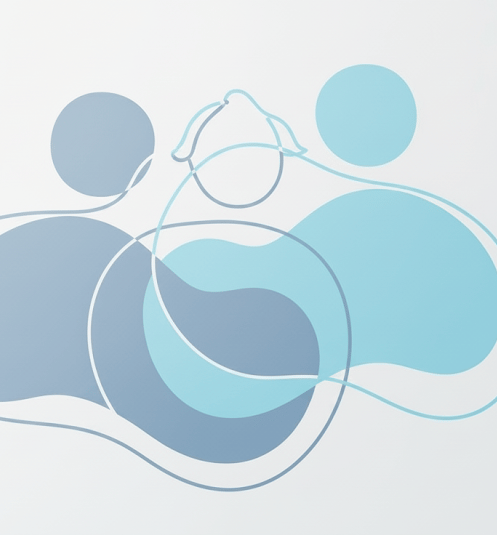Uluslarası İmago İlişki Terapisi ve Kolaylaştıcılığı Eğitimleri
"Aslında, hepimizin aradığı şey bağlantıdır: kendi bastırılmış yönlerimizle, diğer insanlarla ve içinde yer aldığımız o büyük evrenle kurulan bir bağ." Dr. Harville Hendrix
Türkiye'deki tüm İmago Uluslararası Eğitim Enstitüsü (IITI) bünyesinde uluslararası İmago sertifikasyon programları için resmi eğitim ve temas bilgilerine buradan ulaşabilirsiniz.




İmago Yaklaşımına ve Teoriye Genel Bakış
İmago Çift Terapisi, ilişki terapisi alanında uluslararası düzeyde önde gelen yaklaşımlardan biri olarak kabul edilir. 1980'lerde Amerika Birleşik Devletleri'nde Dr. Harville Hendrix ve Dr. Helen LaKelly Hunt tarafından geliştirilmiştir.
Başlangıçtaki odağı çift terapisi olsa da, yöntemin uygulama alanları zamanla evrilmiş ve binlerce sertifikalı İmago Terapisti, Eğitmeni ve Kolaylaştırıcısı, bu yaklaşımı artık bireylerle, ailelerle, kurumlarla ve çeşitli sosyal topluluklarla bütünleşik bir şekilde paylaşmaktadır.
İmago, ilişkilerimizin psikodinamik kökenlerini ve işleyiş mekanizmalarını sistematik bir şekilde haritalandıran kapsamlı ve evrilmeye devam eden bir teorik çerçeve ve bu teorik anlayışı pratiğe dönüştüren yapılandırılmış bir terapi yaklaşımı sunar. Diğer terapi ekolleriyle diyaloğunu sürdürerek ve bütünleştirici bir şekilde anlayışını genişleterek gelişimine devam etmektedir
İmago'nun merkezinde, sıradan bir sohbetin ötesine geçerek gerçek bir anlayış ve bağ kurmayı sağlayan derin bir iletişim yolu olan "İradî Diyalog" (Intentional Dialogue) yer alır. Bu pratik sayesinde, derinden ve yargısız bir şekilde dinlemeyi, birbirimizin bakış açılarını onurlandırmayı öğrenir; ailemiz, arkadaşlarımız, iş arkadaşlarımız ve toplumla olan ilişkilerimizde yeni köprüler ve anlamlar inşa etme imkanı oluşur.
.
"Çatışma, gerçekleşmeye çalışan gelişimin ve farklılığın habercisidir ..."
İlişkisel çatışmaları, birer gelişme fırsatı olarak görür ve dönüştürür.
Birbirimizi daha derin ve daha gerçek bir düzeyde anlamamızı sağlar.
Geçmişteki incinmelerin ve kişilik adaptasyonlarının, bugünkü ilişkilerimizde ortaya çıkma ve dönüşme potansiyelini görmemize yardımcı olur.
Bireylerin kendi ihtiyaçlarını ve davranışlarının başkaları üzerindeki etkilerini görmesine yardım eder; böylece öğrenme ve gelişmemiz sürekli hale gelir.
İlişkilerimize yeniden bağlanma ve gerçek samimiyet getirir.
Bireyler, iyileşme ve gelişme sürecinin aktif katılımcıları haline gelir.
Neden İmago?



İmago yaklaşımı, ilişkileri yalnızca duygusal tatmin kaynağı olarak görmez; aynı zamanda kişinin kendi gölgeleriyle yüzleştiği, geçmiş yaralarını dönüştürdüğü ve daha bütünleşmiş bir benliğe evrildiği bir alan olarak değerlendirir. Partner, yalnızca "yarayı tetikleyen biri" değil, aynı zamanda o yaranın iyileşmesini mümkün kılan bir aynadır. Bu bakımdan İmago, ilişkileri bir uyanış alanı olarak ele alır.
Çiftler İçin İmago...
"Evliliğin bilinçdışı amacı çocuklukta yarım kalanı tamamlamaktır.''

Bireyler İçin İmago...
Çift Olmanın Ötesinde: Öze Doğru Bir Yolculuk
İmago, ilişkileri iyileştirmekle tanınsa da; ilkeleri, bireysel gelişim için de derin faydalar sunar. İmago, insanları temelde ilişkisel varlıklar olarak görür ve iyileşmenin aynı anda hem ilişkilerde hem de bireylerin içinde gerçekleştiğine inanır. İster terapi odasında ister günlük yaşamda olsun, İmago, kişiye kendini anlama ve başkalarıyla hakiki bir bağlantı kurma konusunda araçlar sağlar.
"İncinmiş yerlerimize bilinçli ve anlayışlı bir farkındalıkla yaklaştığımızda, buraları bize bilgeliğin kapısını aralar...."

Gruplar & Topluluklar için İmago
İmago Yaklaşımı, bir terapi yönteminin ötesinde; dünyada var olma ve sosyal ilişkiler kurma konusunda yeni bir paradigma sunar. Bu yaklaşım, bireyin kendisiyle, yakın ilişkileriyle ve içinde yer aldığı topluluklarla daha bilinçli, empatik ve diyaloğa dayalı bir ilişki kurması için alan açar.
İmago, aileler, ekipler, işletmeler ve topluluklar için yapılandırılmış bir diyalog yoludur. Reaktif tartışmaları saygılı bir diyaloğa dönüştürerek, farklı seslerin gerçekten duyulması, değer görmesi ve kolektif bilgeliğin bir parçası haline gelmesi için gerekli olan psikolojik güvenliği yaratır. Bu, grupları, sadece bireylerden oluşan topluluklar olmaktan çıkarıp uyumlu, esnek ve dayanıklı bir bütün haline getiren bir pratiktir.
